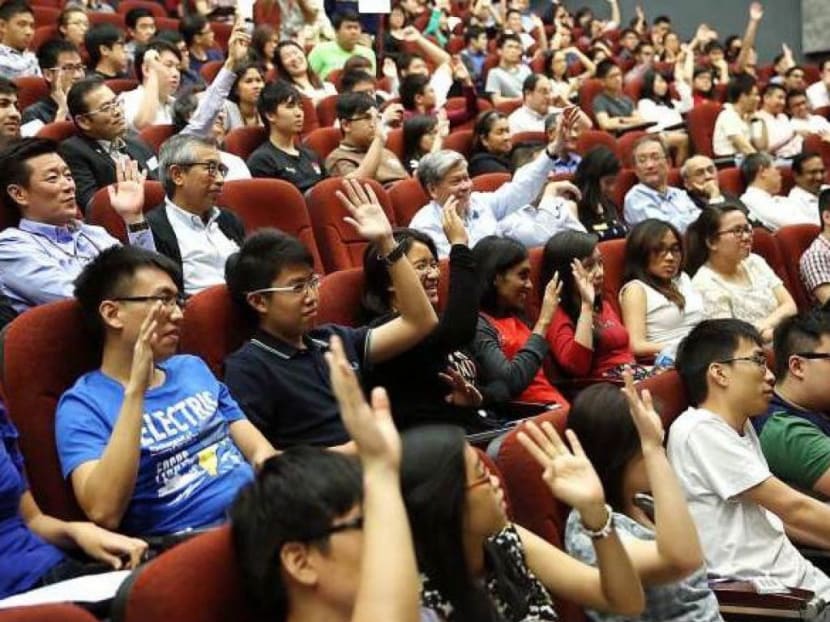Greater discourse needed on foreign students in S’pore varsities
Knee-jerk opposition to the admission of international students in Singapore’s autonomous universities revolve around two related themes: While opponents are not against these students per se, they are concerned that they may be taking up too many places, and that international students who do earn a place should self-finance their studies.
Knee-jerk opposition to the admission of international students in Singapore’s autonomous universities revolve around two related themes: While opponents are not against these students per se, they are concerned that they may be taking up too many places, and that international students who do earn a place should self-finance their studies.
There was therefore the familiar chorus in response to a suggestion by two academics from the National University of Singapore to admit more of them — or more precisely “to admit more full-fee paying international students” — in their commentary, “Time for Singapore universities to admit more international students” (Jan 28).
Facebook respondents wrote: “Priority must go to Singaporeans (especially) for popular courses like Medicine and Law”, and “Instead of increasing the number of places for foreign students, why not reduce the amount of grants given to foreigners?”.
The perpetuation of these perspectives — including misinformed ones, where the number or percentage of international students are falsely inflated — can be frustrating, especially when juxtaposed against the benefits of having a vibrant community of these students within the universities.
Some of these benefits include the academic diversity within classrooms, which enhances teaching and learning. Outside the classroom, Singaporean students expand their global networks.
Yet there are still two problems. First, besides figures on the proportion of permanent residents and foreigners in the universities, little is really known about the distribution within the universities and their schools or departments, as well as funding amounts.
Second, the aforementioned benefits accrue most directly to those within the university, and not necessarily to those outside it or those who might have been denied admission.
Without offering greater transparency on the distribution of international students and their funding amounts, and without broadening the discourse to include socio-economic issues relating to admissions and financial support within the universities — such as that of the class divide — the Government will continue to confront the same scepticism.
There should be more data and information on these, perhaps modelled after the Graduate Employment Survey, which ranks the permanent employment rates and mean or median monthly salaries of graduates by their degree programmes, as well as the tuition grants, government scholarships, or other funding sources received by these students — maybe in comparison to the ones offered to Singaporeans.
And to broaden the discourse, more information on the socio-demographic distribution of the Singaporeans enrolled in the autonomous universities could be provided.
Knowledge of these distributions is important, because the present perceptions of individuals on campus are likely to be shaped by their day-to-day interactions. In other words, Singaporean students studying in faculties hosting more international students may cast unjustified doubt over the overall proportion of the population, not to mention the difficulty of differentiating among undergraduates, post-graduates, and foreign students on exchange programmes.
As it is, individuals on both sides will still grab at any evidence to confirm biases, such as personal anecdotes of Singaporean students having to head abroad to further their studies, or the occasional news reports of abuses or transgressions towards international student, for instance.
In terms of distribution, another question we have to ask: Do Singaporeans of varying socio-demographic backgrounds have equal shots of gaining admission to the autonomous universities?
The Government and the universities cannot merely extol the benefits of a community of international students, of improvements to the international rankings of the universities, or of the added academic or co-curricular vibrancy within the schools, without cognisance of the frustrations which are bubbling, and without working to fix the outstanding issues.







